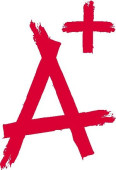HLT 362V Exercise 14 & 19

- Academia
- Rating : 60
- Grade : A+
- Questions : 0
- Solutions : 4595
- Blog : 1
- Earned : $25563.50

Exercise14
1. According to the study narrative and Figure 1 in the Flannigan et al. (2014) study, does the APLS UK formula under- or overestimate the weight of children younger than 1 year of age? Provide a rationale for your answer.
2. Using the values a = 3.161 and b = 0.502 with the novel formula in Figure 1, what is the predicted weight in kilograms (kg) for a child at 9 months of age? Show your calculations.
3. Using the values a = 3.161 and b = 0.502 with the novel formula in Figure 1, what is the predicted weight in kilograms for a child at 2 months of age? Show your calculations.
4. In Figure 2, the formula for calculating y (weight in kg) is Weight in kg = (0.176 × Age in months) + 7.241. Identify the y intercept and the slope in this formula.
150
5. Using the values a = 7.241 and b = 0.176 with the novel formula in Figure 2, what is the predicted weight in kilograms for a child 3 years of age? Show your calculations.
6. Using the values a = 7.241 and b = 0.176 with the novel formula in Figure 2, what is the predicted weight in kilograms for a child 5 years of age? Show your calculations.
7. In Figure 3, some of the actual mean weights represented by blue line with squares are above the dotted straight line for the novel formula, but others are below the straight line. Is this an expected finding? Provide a rationale for your answer.
8. In Figure 3, the novel formula is (weight in kilograms = (0.331 × Age in months) − 6.868. What is the predicted weight in kilograms for a child 10 years old? Show your calculations.
9. Was the sample size of this study adequate for conducting simple linear regression? Provide a rationale for your answer.
10. Describe one potential clinical advantage and one potential clinical problem with using the three novel formulas presented in Figures 1, 2, and 3 in a PICU setting.
Exercise 19 – Understanding Pearson Chi-Square
1. According to the relevant study results section of the Darling-Fisher et al. (2014) study, what categories are reported to be statistically significant?
2. What level of measurement is appropriate for calculating the χ2 statistic? Give two examples from Table 2 of demographic variables measured at the level appropriate for χ2.
3. What is the χ2 for U.S. practice region? Is the χ2 value statistically significant? Provide a rationale for your answer.
4. What is the df for provider type? Provide a rationale for why the df for provider type presented in Table 2 is correct.
200
5. Is there a statistically significant difference for practice setting between the Rapid Assessment for Adolescent Preventive Services (RAAPS) users and nonusers? Provide a rationale for your answer.
6. State the null hypothesis for provider age in years for RAAPS users and RAAPS nonusers.
7. Should the null hypothesis for provider age in years developed for Question 6 be accepted or rejected? Provide a rationale for your answer.
8. Describe at least one clinical advantage and one clinical challenge of using RAAPS as described by Darling-Fisher et al. (2014).
9. How many null hypotheses are rejected in the Darling-Fisher et al. (2014) study for the results presented in Table 2? Provide a rationale for your answer.
10. A statistically significant difference is present between RAAPS users and RAAPS nonusers for U.S. practice region, χ2 = 29.68. Does the χ2 result provide the location of the difference? Provide a rationale for your answer.
1.
[Solved] HLT 362V Exercise 14 & 19
- This Solution has been Purchased 3 time
- Submitted On 18 Jul, 2017 02:29:41

- Academia
- Rating : 60
- Grade : A+
- Questions : 0
- Solutions : 4595
- Blog : 1
- Earned : $25563.50


Application_of_Statistics_in_Health_Care.docx(1) HLT 362V Application of Statistics in H

statistics helpStatistics HLT 362V questions to be graded exercise 33

HLT 362V Applied Statistics for the Health Care Professional Exercise 33

HLT 362V questions to be graded exercise 33

HLT 362V Exercise 14 & 19
The benefits of buying study notes from CourseMerits

Assurance Of Timely Delivery
We value your patience, and to ensure you always receive your homework help within the promised time, our dedicated team of tutors begins their work as soon as the request arrives.
Best Price In The Market
All the services that are available on our page cost only a nominal amount of money. In fact, the prices are lower than the industry standards. You can always expect value for money from us.


